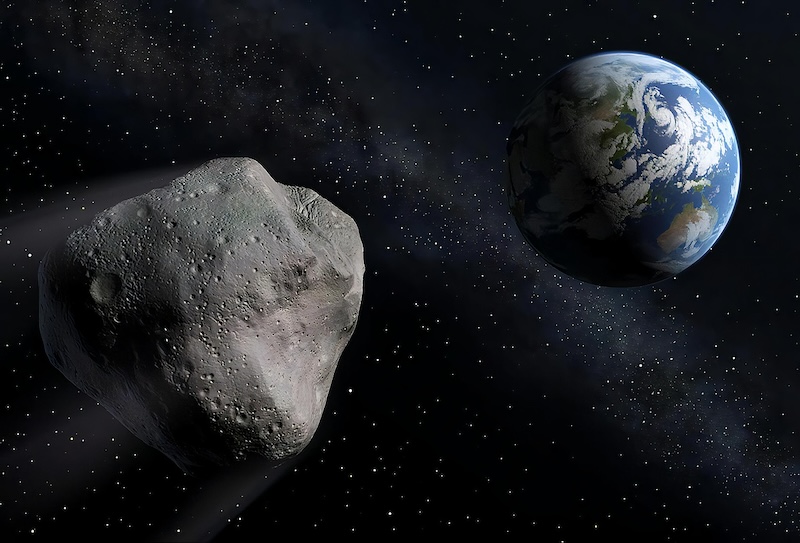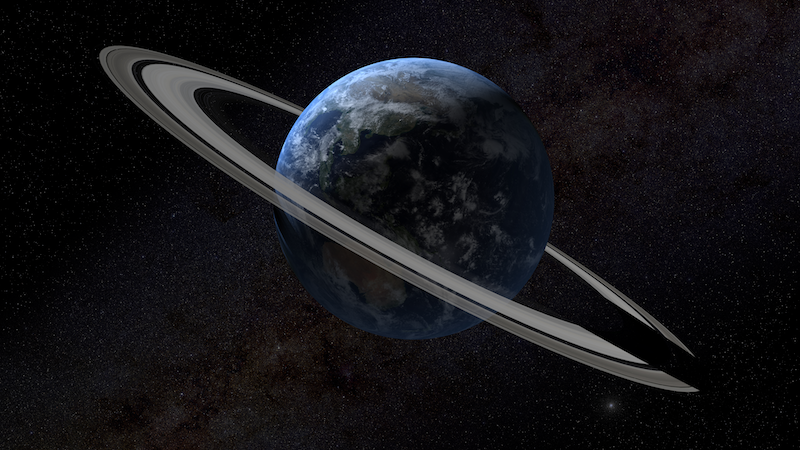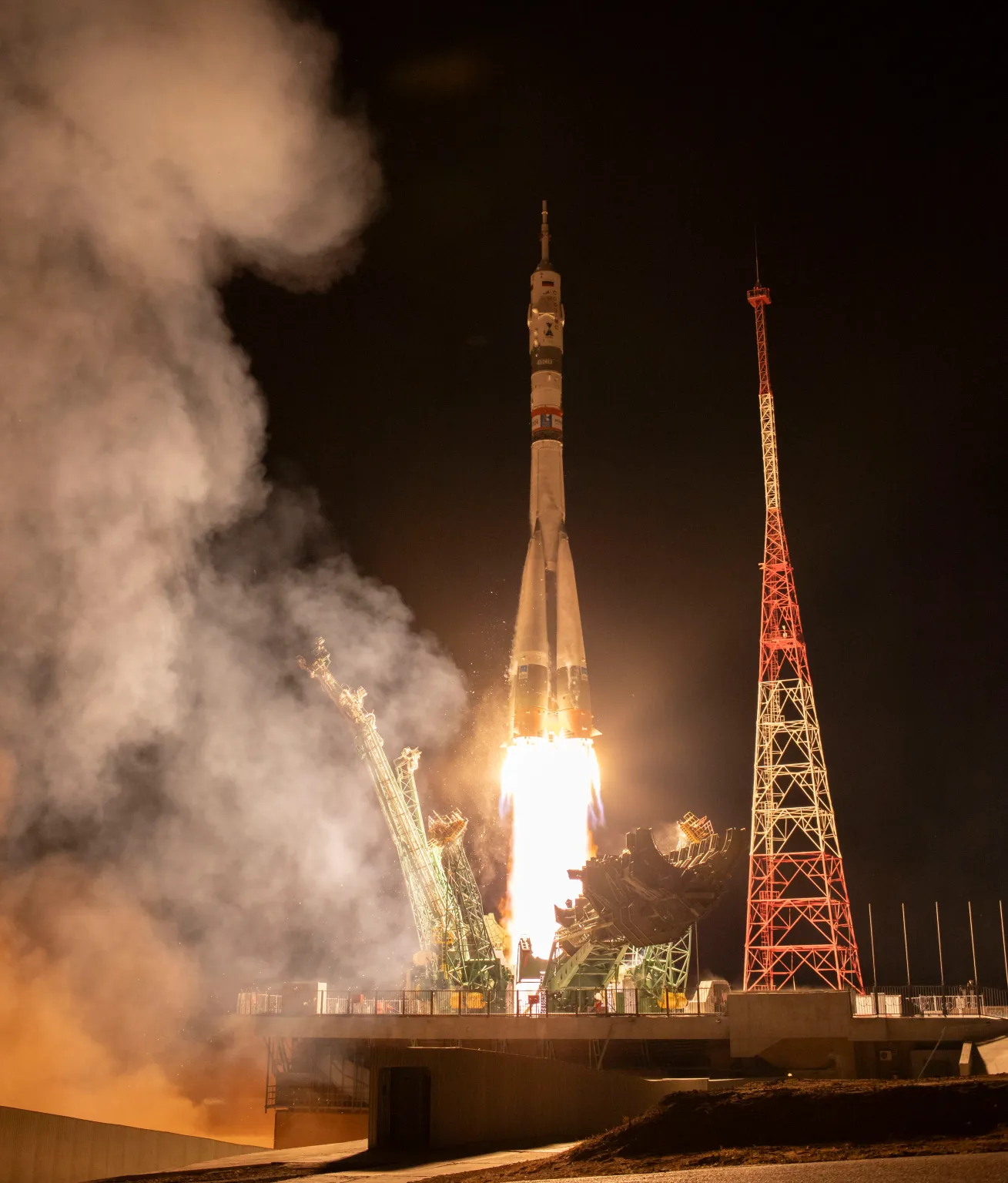*

- Several planets in our solar system have rings. Even some asteroids have rings. But why not Earth?
- Earth did once have its own rings, according to a new study, some 466 million years ago. Earth’s gravity ripped apart an asteroid that got too close, forming the rings.
- The rings may have had a cooling affect, lowering global temperatures.
Did Earth have rings 466 million years ago?
Ring systems are common in our solar system. Saturn, Jupiter, Uranus, Neptune and even some dwarf planets and asteroids have rings. Earth, sadly, does not. But it might have in the past. That’s what researchers at Monash University in Australia said on September 16, 2024. Their study of asteroid impact craters from 466 million years ago – during the middle Ordovician Period – shows Earth may have had its own ring system.
The researchers, led by Andy Tomkins from Monash University’s School of Earth, Atmosphere and Environment, published their peer-reviewed findings in Earth And Planetary Science Letters on September 12, 2024.
Did Earth have rings long ago?
Since both larger planets and smaller bodies like asteroids can have rings, why not Earth? Our planet never had rings gracing its skies. Or did it?
The researchers hypothesize that a large asteroid passed close to Earth about 466 million years ago. It passed close enough that it was within the Roche limit. That is the minimum distance to which a smaller body can approach a larger primary body without tidal forces overcoming the internal gravity holding the satellite together.
In other words, if the smaller body gets too close, it will be torn apart. In this case, Earth’s gravity ripped apart the asteroid. The resulting debris began to orbit Earth, forming a ring or rings.
Clues from asteroid impacts
How did the researchers determine that an asteroid form a ring, and when it happened? They examined the locations of 21 known asteroid impacts, dating back to the Ordovician Period, 466 million years ago. And they noticed something unusual.
All the craters were located within 30 degrees of the equator. This seemed odd, since over 70% of Earth’s continental crust – that forms nearly all of Earth’s land surface – was outside of that region. Why were the craters confined to this region? The research team postulated that the craters formed from debris that gradually fell back to Earth from the rings over time. As Tomkins explained:
Over millions of years, material from this ring gradually fell to Earth, creating the spike in meteorite impacts observed in the geological record. We also see that layers in sedimentary rocks from this period contain extraordinary amounts of meteorite debris.
Random or non-random?
But were these impacts really non-random? To answer this, the researchers calculated the continental surface area capable of preserving craters from that time. They looked at cratons – large parts of the continental crust that have remained stable – with rocks older than the mid-Ordovician Period.
The researchers excluded areas buried under sediments or ice, eroded regions and areas affected by tectonic activity. They found suitable regions across various continents, including Western Australia, Africa, the North American Craton and small parts of Europe. Such areas should have preserved craters if they existed.
But all the impact craters were in the 30% of the cratons that were close to the equator. According to the researchers, this shows the distribution of craters was non-random. They likened it to tossing a three-sided coin and having it land on tails 21 times.

Effects on climate
The ring system may also have affected Earth’s climate. Tomkins said:
What makes this finding even more intriguing is the potential climate implications of such a ring system.
How would this happen? The rings could have had a cooling effect, which would also explain another aspect of the late Ordovician Period: It was cold. In fact, it was one of the coldest times in the last 500 million years. The rings system could have cast a shadow on Earth by partially blacking sunlight. The researchers said this may have contributed to a global cooling period called the Hirnantian. The Hirnantian was the final stage of the Ordovician Period.
Tomkins said:
The idea that a ring system could have influenced global temperatures adds a new layer of complexity to our understanding of how extraterrestrial events may have shaped Earth’s climate.
Also, if rings existed at that point in Earth’s history, could they have also existed at other times as well? We don’t know yet, but it’s possible.

Saturn’s moon Iapetus
The findings are also reminiscent of what scientists say has occurred on other bodies in the solar system. Saturn’s small moon Iapetus has an unusual, tall mountain-like ridge that goes almost all the way around it at the equator. How did it form? Scientists say one theory is that a former ring may have collapsed and deposited the debris on the moon, forming the ridge.
This is a bit reminiscent of what may have happened on Earth, except that the debris didn’t form a ridge, just craters.
Bottom line: Did Earth have rings eons ago? A new study suggests that Earth had its own ring system 466 million years ago, which formed from the breakup of an asteroid.
Source: Evidence suggesting that earth had a ring in the Ordovician
Via Monash University
Read more: Saturn’s rings are disappearing!
Read more: Webb sees Neptune’s rings and moons. Wow!





No comments! Be the first commenter?